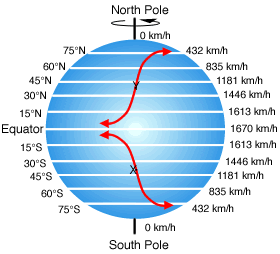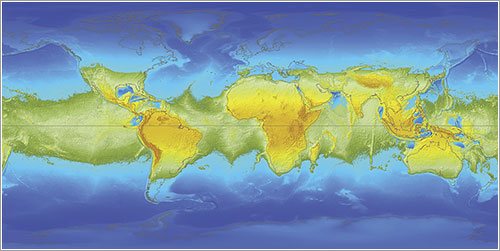 Aunque nosotros no lo percibamos porque nos movemos con ella -y ya dijo un tal Einstein que todo es relativo- la Tierra, en su movimiento de rotación, se mueve a unos 1.700 kilómetros por hora en el ecuador, velocidad que baja a unos 850 kilómetros por hora a 60 grados de latitud, y que sólo es nula en los polos.
Aunque nosotros no lo percibamos porque nos movemos con ella -y ya dijo un tal Einstein que todo es relativo- la Tierra, en su movimiento de rotación, se mueve a unos 1.700 kilómetros por hora en el ecuador, velocidad que baja a unos 850 kilómetros por hora a 60 grados de latitud, y que sólo es nula en los polos.Esta velocidad provoca lo que conocemos como fuerza centrífuga, aunque los físicos nos dirán que esta no existe y que en realidad deberíamos hablar de la fuerza centrípeta, que hace que la Tierra se ensanche por el ecuador, que el nivel de los océanos suba también hacia este, así como otros efectos en el clima y en las placas tectónicas.
No es previsible que la Tierra deje de girar, aunque si esto sucediera de repente saldríamos disparados a causa de la inercia, con consecuencias catastróficas.
Pero Witold Fraczek, que trabaja en Esri, una empresa que desarrolla software para Sistemas de Información Geográfica, ha utilizado el software de esta para modelar cómo quedaría la Tierra si su movimiento de rotación fuera frenando poco a poco, y sus conclusiones son que al final habría dos grandes océanos alrededor de los polos y un gran continente único situado alrededor del ecuador:
Claro que a nuestros hipotéticos descendientes nos importaría más bien poco porque probablemente no habrían sobrevivido a los drásticos cambios en el clima que provocaría tener noches y días de seis meses de duración, por no hablar de los tremendos terremotos que se producirían cuando las placas tectónicas se recolocaran según fuera disminuyendo el efecto de la fuerza centrípeta.
